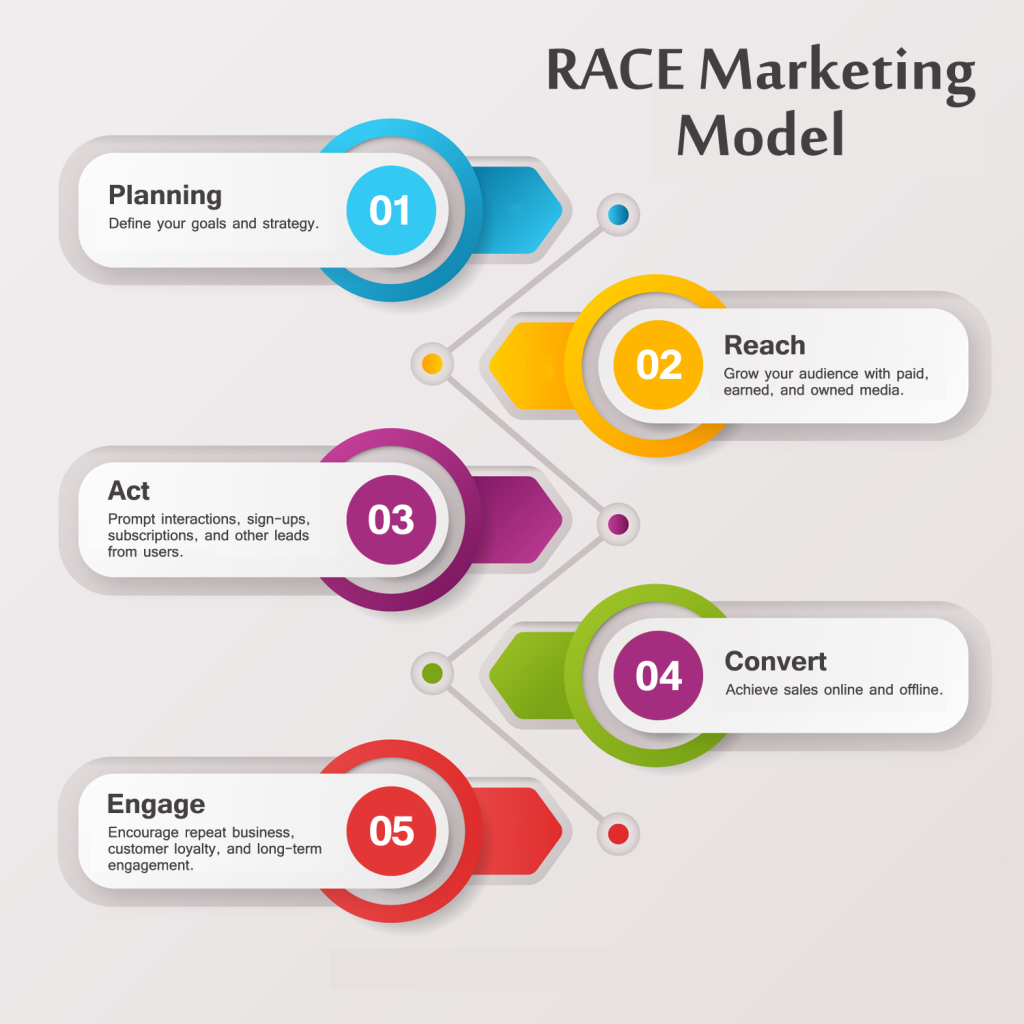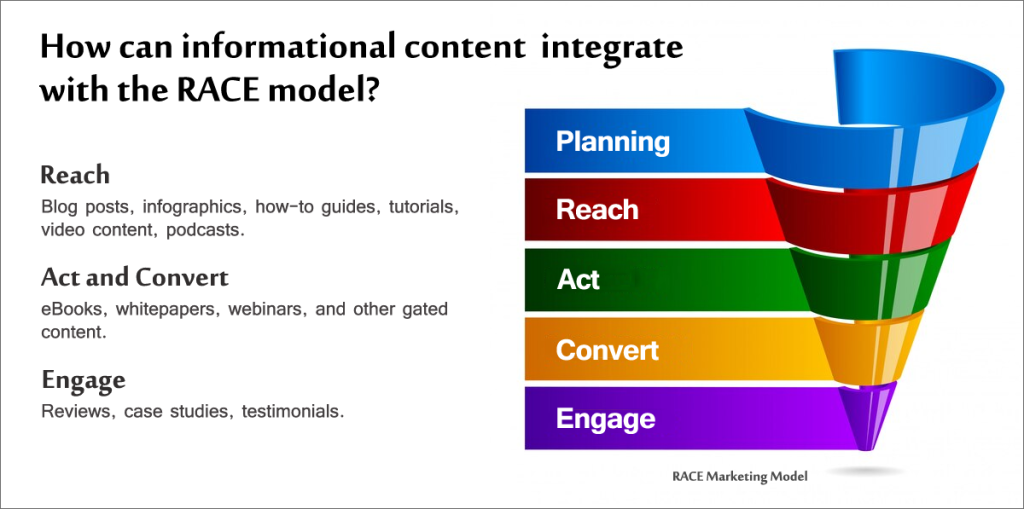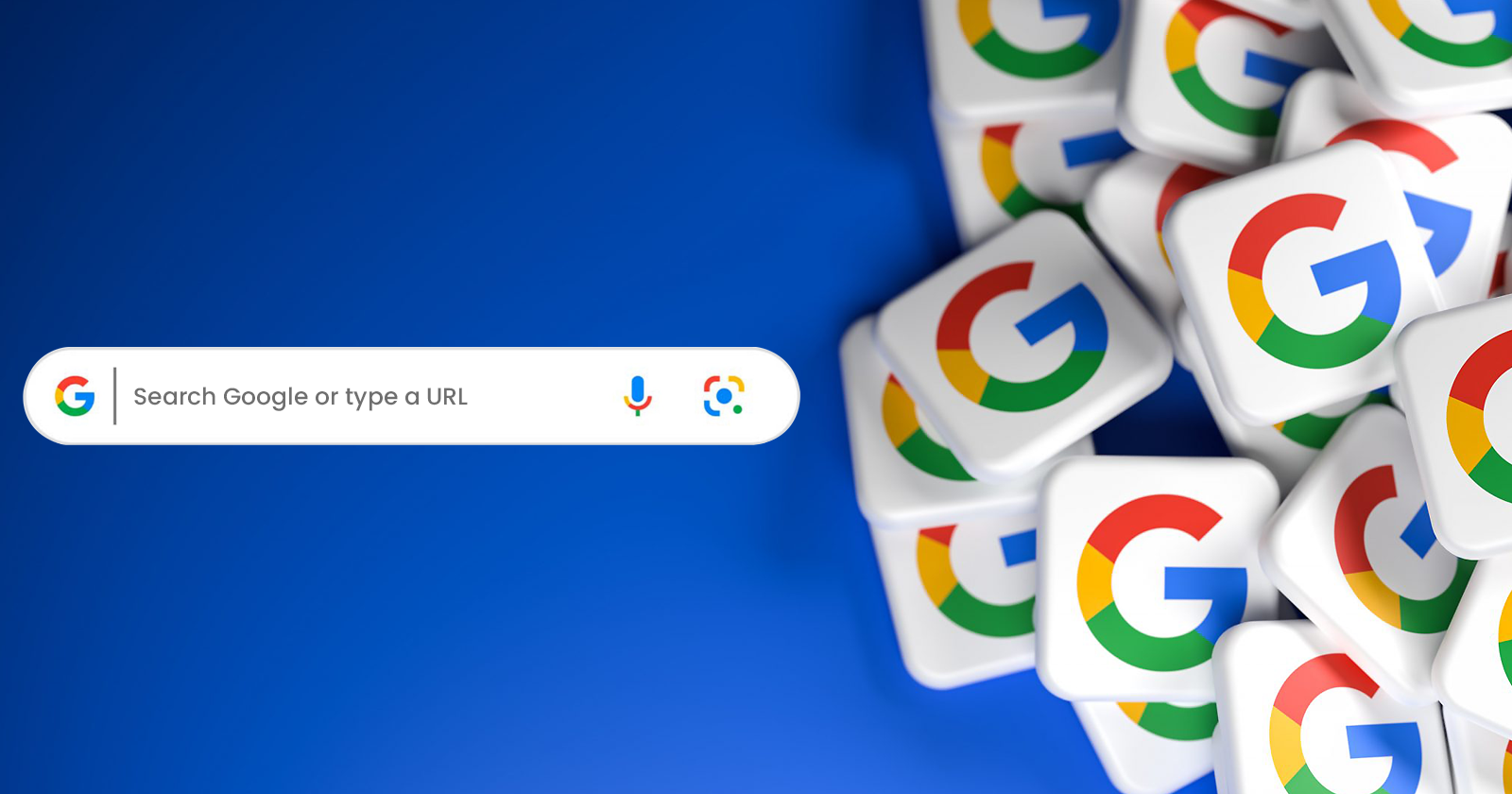In the ever-evolving world of online marketing and SEO, businesses often overlook the role of informational content in engaging customers. Most websites are primarily focused on selling products or offering services.
Naturally, it seems logical to prioritize landing pages that cater to the immediate purchasing needs of potential customers, aiming to maximize revenue and increase sales. But what about content that involves comparison, “Versus” posts, and reviews based on personal experiences?
While such content is crucial for enhancing website functionality and driving sales, a sole focus on these elements only partially addresses online consumer behavior.
Before adding items to their online shopping cart or making inquiries, consumers typically seek out useful information and solutions to their problems. This preliminary research stage is where informational content plays a pivotal role.
Creating informative content for potential customers and drawing more visitors to the website at the outset of the marketing funnel is essential. In this post, we will explore the significance of providing valuable information on your website for its success and as part of your digital marketing strategy.
What is Informational Content?
In the realm of digital marketing, informational content refers to the material produced by a company to educate, enlighten, and engage customers within a specific industry. This content aims to offer practical solutions, address user problems, and respond to their inquiries. Information is a cornerstone of content marketing.
Information can be presented in various formats, including in-depth blog posts, images, videos, and more. The objective is to create content that is both engaging and beneficial for the intended audience, aiming to answer their questions and assist with any issues related to a specific topic.
Hiring a full-time content writer ensures a consistent flow of high-quality informational content, which not only enhances your website’s authority but also engages and educates your audience, ultimately driving long-term success.
What’s the Difference Between Informational and Promotional Content?
Informational content differs significantly from promotional content. Its primary aim is to assist users by addressing their questions and solving their problems, rather than merely promoting a brand or business.
Informational content is crafted to educate or provide vital information to the audience. It delivers facts and knowledge without any sales agenda, aiding individuals with queries, showcasing expertise, and building trust.
On the other hand, promotional content is designed to market a product, service, or brand. It typically includes advertisements, special offers, and persuasive messages that encourage purchases. While informational content offers valuable insights, promotional content focuses on influencing user actions or sales. Both types are crucial in content marketing, catering to different aspects of the customer journey.
In SEO terms, informational content is tailored to respond to user inquiries during their information-seeking stage. Without valuable content on your website, attracting visitors can be challenging, especially in an era of increased online shopping. Utilizing diverse keywords can enhance your website’s visibility.
Importance of Informational Content
Discussing the significance of informational content in digital marketing, it’s beneficial to consider how different content types integrate into prevalent marketing frameworks, like the RACE model.
RACE Marketing Model

The RACE marketing planning model aids businesses in developing comprehensive digital marketing strategies, taking into account customer purchasing behaviors. It segments marketing activities into distinct phases, illustrating how an organization aims to build brand awareness, attract new customers, drive sales, retain clients, and foster long-term customer relationships.
The RACE Marketing model is a framework facilitating the planning and implementation of marketing strategies. Employing a framework like RACE can be crucial for digital success for several reasons:
Comprehensive strategy: The RACE model ensures the inclusion of all critical elements of a successful digital marketing campaign, from initial audience engagement to fostering loyalty and nurturing relationships.
Organized and focused: This framework guides businesses in strategizing their tactics for each stage of the customer journey, preventing disjointed efforts in achieving marketing objectives.
Data-driven optimization: The cyclical nature of the model underscores the importance of measuring the efficacy of various tactics by monitoring and analyzing key metrics. This approach enables marketers to refine and enhance their strategies progressively for optimal results.

Depending on your objectives and activities, various types of information can be strategically utilized at different stages of the RACE framework. For instance, websites can engage their audience with captivating blog posts that address readers’ challenges, provided they employ a well-crafted strategy.
Incorporating solutions related to their products or services, such content can attract new customers and prompt them to take action, potentially leading to purchases. This approach is widely used in affiliate marketing but is also applicable to other website types, such as brochures or e-commerce sites.
Consider an online store specializing in sports equipment aiming to boost sales of football gear in the fourth quarter. As part of their digital marketing strategy, they might publish a blog post titled “Winter Football Tips.” The primary goal is to address issues like slipping on icy fields and staying warm during training sessions.
The writer can offer advice and tips while promoting their products, such as football boots, socks, and warm clothing. This approach not only assists people in solving problems but also guides their purchasing decisions, potentially enhancing the company’s sales and profits.
This methodology is increasingly popular for creating video content, especially on burgeoning platforms like TikTok and TikTok Shop. These platforms enable businesses to reach a broad audience and showcase products that align with users’ interests.
Producing engaging videos that resonate with what users want, like, and dislike can effectively boost online sales. This is particularly relevant in today’s digital landscape where online shopping is remarkably accessible.
Advantages of Informational Content for SEO
Successful digital marketing transcends mere information dissemination; it also aims to enhance a company’s website ranking on search engines. This is often achieved through blog posts, where the content plays a vital role in strengthening the SEO strategy. Let’s explore how crafting useful content can benefit SEO.
Expertise and Authority
Developing informational content is an excellent strategy to establish your website as a leading authority in your domain. Building a robust reputation in a specific area signals to search engines your expertise.
Adhering to Google’s guidelines through this approach boosts your chances of ranking for relevant keywords, attracting more visitors, and fostering brand trust. A proficient method to demonstrate extensive knowledge of a subject is through the creation of topic clusters.
Topic clustering involves grouping related articles around a central theme. A pillar page provides an overview of a topic and links to more in-depth cluster pages. The objective is to comprehensively cover a topic with a wealth of information. Over time, this can position your website as a go-to resource for both potential customers and search engines.
Also Read: Google’s Update E-A-T — How it Affects Your Industry (and What to do about it)!
Long-Tail Keywords
In SEO-focused content creation, such as writing blog posts, there is a significant emphasis on targeting specific keywords. Long-tail keywords, characterized by their length and specificity, are more detailed search phrases. These keywords are typically less competitive than shorter, more generic keywords, making them easier to rank for.
Despite their lower search volume, long-tail keywords can account for a substantial portion of searches within a topic and can drive a significant amount of organic traffic. This is particularly relevant considering the advancements in computer language processing and the increasing prevalence of voice search.
With Google’s BERT algorithm update, the search engine has improved its understanding of longer and more complex search queries. This enhancement allows users to find more accurate results for their detailed searches on Google.
Long-tail keywords, due to their specificity, align closely with user search intent. As a result, content targeting these keywords is more likely to meet user needs effectively, leading to higher click-through rates and increased engagement.
Internal Linking
Another advantage of creating informational content for SEO is its contribution to internal linking within your website. This involves connecting various content pieces, such as linking related blog posts or main pages.
Internal links not only facilitate easier navigation for users but also aid search engines in better understanding your site’s content. They play a crucial role in building topic clusters and establishing your authority in different subject areas.
Internal links distribute link equity throughout your website, starting from the homepage, which typically garners the most external links. By incorporating links in your new blog posts, you enhance the structural integrity of your website. This practice can lead to improved rankings of your content in search engine results.
Link Acquisition
Creating high-quality, informative blog posts is a crucial component of an effective link acquisition strategy for your website. By consistently providing fresh, useful information, your website becomes a valuable resource for your audience and peers in your industry.
Well-crafted blog posts have the potential to attract external links. Other websites and content creators may reference your posts, embedding links to them in their own material or using them as a resource for their readers. Maintaining a robust collection of blog posts can significantly enhance your website’s ability to acquire links from external sources.
Having a portfolio of outstanding blog posts can also facilitate outreach to potential guest post hosts and link-building partners, showcasing your expertise and credibility. With high-quality content, you might even find opportunities coming to you, with others seeking collaborations.
Also Read: 11 Best Backlink Checkers in Today’s SEO Market
Traffic Generation
The primary objective of an SEO-focused blog strategy is to drive substantial traffic to your website through content that remains relevant over time. In SEO parlance, ‘evergreen content’ refers to blog posts that continue to attract search interest and retain their significance over extended periods.
Evergreen content, when ranked highly in search engines and routinely updated, can generate consistent, organic traffic to your website. These visitors are likely to engage regularly with your site, interacting with your content and pages. Such sustained traffic is invaluable for maintaining a dynamic and active online presence.
Tips to Write Informational Content
Informational content is a form of writing that provides insights on specific topics or issues. Its primary purpose is educational, aiming to inform readers about a subject rather than persuade them to adopt a particular viewpoint. If you’re looking to craft effective informational articles, here are some tips to guide you.
Pick a Subject You Know Well
Selecting a topic that you are well-versed in is crucial before you begin writing. Familiarity with your subject matter enables you to write confidently and authoritatively. Opting for a topic you know intimately is key to creating engaging and enlightening content.
Your expertise ensures accuracy and fosters trust in your audience. In-depth knowledge allows you to provide nuanced perspectives, real-world examples, and thorough answers to questions.
A genuine passion for the subject often shines through in your writing, making it more compelling and relatable. Being well-informed enables you to elucidate complex concepts effectively, demonstrating your proficiency and earning your readers’ trust.
Do a Lot of Research on Your Topic
Even on familiar topics, comprehensive research is essential. This involves delving into articles, books, and other resources, and possibly engaging with experts or conducting interviews. Gathering diverse information from various sources is critical for a well-rounded understanding of your subject.
Thorough research is the foundation for impactful content. It’s vital to explore your topic from multiple angles, drawing on reliable and diverse sources. This not only validates the accuracy of your content but also allows you to present a holistic view, encompassing various perspectives and data.
Immerse yourself in academic journals, industry reports, and expert opinions to enrich your knowledge base. Staying abreast of the latest developments in your field ensures that your content remains relevant and valuable. Research-driven content not only educates your readers but also reinforces your authority on the subject.
Organize Your Information in Order
After gathering your research, it’s crucial to structure the information in a manner that’s clear and comprehensible. Consider creating an outline or using headings and subheadings to systematically organize your content.
Whether you’re writing a how-to guide, a historical account, or a comparison, clarity in organization is key for reader comprehension. Begin with a well-defined introduction that lays out the topic, followed by the subsequent information arranged in a coherent and logical sequence.
Employ headings, subheadings, and bullet points to break down complex information into more digestible segments. A well-organized structure allows your audience to easily navigate and grasp the content, enhancing their reading experience and understanding. Effective organization not only aids comprehension but also aids in memory retention.
Write in a Clear and Concise Tone
Strive to make the information accessible to all readers, regardless of their familiarity with the subject matter. Utilize straightforward language and steer clear of complex or technical jargon that might alienate or confuse your audience.
Conveying information that is both comprehensible and direct is pivotal in elucidating complex concepts. Opt for simple vocabulary, shun intricate terminology, and dissect complex ideas into manageable components.
Articulate your thoughts in a manner that is easy for readers to follow. Short sentences and well-structured paragraphs can significantly enhance readability. Aim for simplicity without sacrificing depth, ensuring your content is accessible to a broader audience. Clear and concise information not only facilitates understanding but also fosters trust in your message.
Include Real-Life Stories and Examples
Integrating real-life stories and examples can significantly enhance the appeal and relatability of your content for your audience. These narratives are particularly effective in simplifying complex concepts and making them more comprehensible.
Personalizing your content with relatable stories facilitates a deeper connection with your audience. This approach not only makes the information more memorable but also maintains reader interest. Real-life stories simplify complex ideas, validate your points, and provide practical demonstrations of how concepts function in the real world.
Readers often grasp challenging concepts more easily when they are illustrated through tangible, relatable examples. This method not only adds interest to your content but also evokes emotional responses, fostering a stronger connection with the information you present.
Use Visual Content
Enhancing your content with visual elements like images and graphics can significantly increase its impact. Visual aids such as charts, diagrams, and infographics can make your content more engaging and help simplify complex ideas.
Presenting intricate information visually aids comprehension and emphasizes key aspects of your narrative. Tools like infographics, charts, and videos not only facilitate understanding and retention during the reading process but also make the content more accessible.
Visual elements cater to different learning styles, holding readers’ attention longer and making the topic more captivating. When used thoughtfully, visuals can be potent assets in conveying information, elevating the overall experience, and leaving a lasting impression on your audience.
Edit Your Work
Thoroughly revising your work is crucial to ensure it is error-free and comprehensible. Consider seeking feedback from a colleague or friend for an additional perspective. The integrity of your information significantly relies on meticulous editing and error-checking.
After drafting your initial version, refine it by rectifying any errors and enhancing its quality. Strive for clarity, conciseness, and grammatical accuracy in your writing. Editing is instrumental in clarifying your message, eliminating redundancy, and ensuring coherence throughout your content.
Content that is diligently reviewed and free from errors not only reflects your attention to detail but also provides your audience with precise and well-crafted information. Prioritizing editing and proofreading is essential for maintaining a professional appearance and establishing trust with your readers.
By following these guidelines, you can create content that is both informative and accessible. Whether you’re writing a blog post, an article, or a research paper, your primary goal should be to deliver valuable information to your readers in an engaging and easily digestible format.
How to Use Informational Content to Increase Sales?
Now that we’ve explored the nature and advantages of informational content, let’s delve into how it can be leveraged to boost online sales.
Choose the Right Topics
Identify topics that resonate with your audience by researching their preferences and online behaviors. Begin by segmenting your audience based on characteristics like age, gender, and location, including their interests, profession, and geographical location. Consider conducting surveys to gain insights into their preferred content.
Next, examine trends within your industry. Utilizing tools like Google Trends can provide a deeper understanding of relevant topics. Armed with this information, you can then focus on identifying keywords for your article. This approach enhances the article’s potency, particularly in terms of search engine visibility.
Crafting posts that are both informative and relatable can set you apart from competitors. To increase visibility, share your articles on social media, forums, and community groups, broadening your reach and engagement.
Provide Irresistible Offers
Incorporating attractive deals can significantly capture your readers’ interest. It’s a strategic approach to promote your products and services subtly, without overtly appearing sales-driven.
Enhance your post by introducing special offers and promotions, but avoid aggressive sales tactics as they might deter potential customers. Alongside these offers, impart valuable insights relevant to the article’s topic.
Offer practical advice and suggestions that can positively impact your readers’ lives. Present compelling facts backed by credible sources to establish the trustworthiness of your blog.
Discover Your Niche

With billions of articles online, standing out can be challenging. To engage a specific audience, focus on a niche you are knowledgeable about. Seek out subjects that are not only intriguing but also ripe for deeper exploration, offering fresh insights that your audience will appreciate.
Cultivating a niche can lead to a dedicated reader base, contributing to the success of your blog and website. Here are some strategies for selecting a niche for your blog:
- Find a topic that you or your writers know a lot about. This will help the process go faster, be easier, and work better
- Research and find out what topics people are discussing and how many people are interested in them. You can use Wordtracker to see how many people are clicking on the keywords you want to use for your article
- It should be engaging, give important information, and make money all at once
- Check out what your competitors’ customers are interested in
Make Your Own Podcasts and Videos
The popularity of videos and podcasts has surged in recent years. Statista reports that in the first half of 2022, 3.37 billion people globally engaged with digital videos, an increase from 3.26 billion in 2021. Additionally, podcast listenership reached approximately 383.7 million people in 2021. While blog posts remain a staple for marketers, exploring diverse mediums for information sharing is beneficial.
With the growing trend of video consumption and podcast listening, there’s a high likelihood that your audience will appreciate these formats from your brand. Inviting industry experts for interviews or discussions on relevant topics can enhance your content’s value, demonstrating your commitment to providing informative material.
This strategy not only educates your audience about your brand and industry but also allows for exploring trending topics or creating instructional videos.
Final Thoughts
Informational content is a vital component of an effective SEO strategy. Leveraging online information dissemination as a marketing tool can significantly impact a business’s ability to engage potential customers throughout their purchasing journey.
It establishes websites as authoritative voices in their field, boosts search rankings, attracts more site links, and drives organic traffic. Top-performing websites utilize various content types to cater to user needs at different buying stages, encompassing a comprehensive online marketing plan.
Informational content is a credible way to capture your target audience’s attention, elevating your blog’s value and enhancing revenue potential. Conducting thorough research and understanding audience preferences are key to crafting content that not only engages but also drives sales.
FAQs
Why should websites have informational content?
Informational content provides essential educational insights to users. It serves to answer queries, resolve issues, and position the website as a trusted information source within its industry.
How does having informational content help with SEO?
Search engines favor content that is informative, relevant, and valuable to users. High-quality, well-organized, and useful content can improve a website’s search engine visibility, attracting more visitors organically and enhancing its prominence in related searches.
What different ways can informational content be presented?
Informational content can be presented in diverse forms, including blogs, guides, images, videos, and podcasts. The choice of format depends on the nature of the information and the target audience.
Who is the informational content meant for?
Informational content is typically designed to assist a specific audience segment with their informational needs. Understanding the audience’s interests and challenges is crucial to creating content that is both engaging and useful.


























